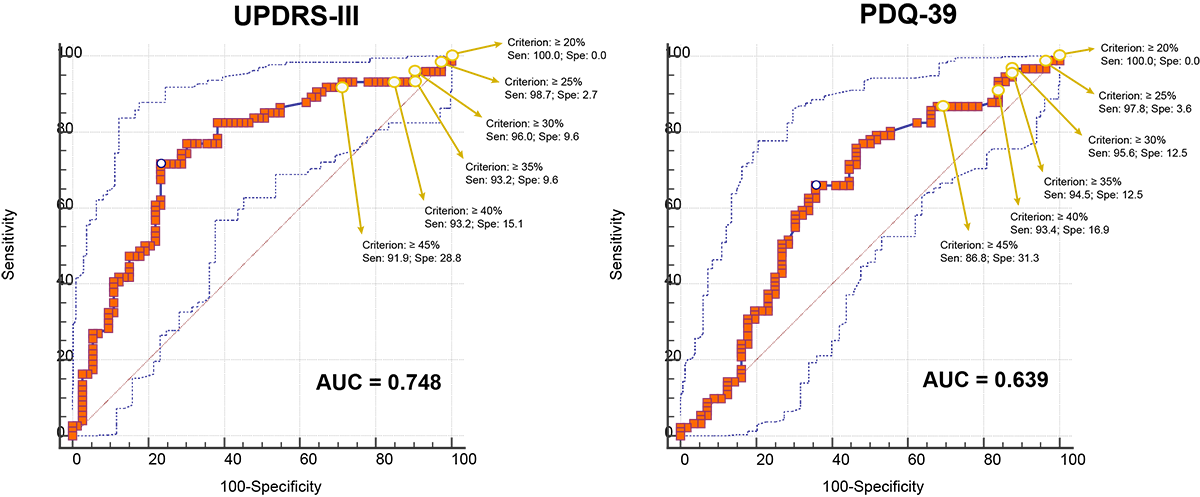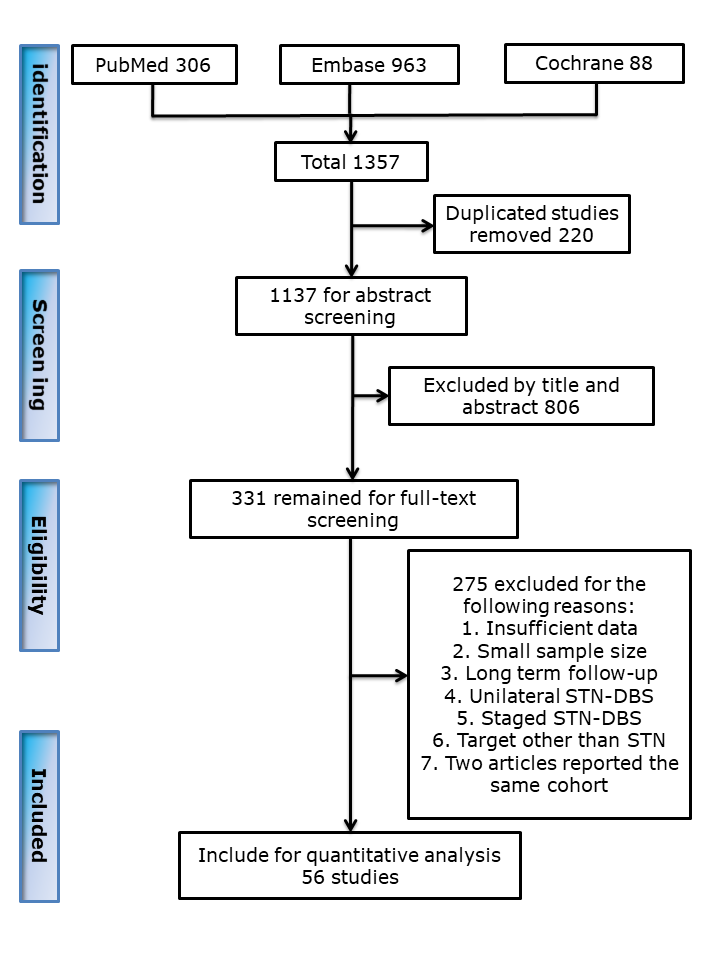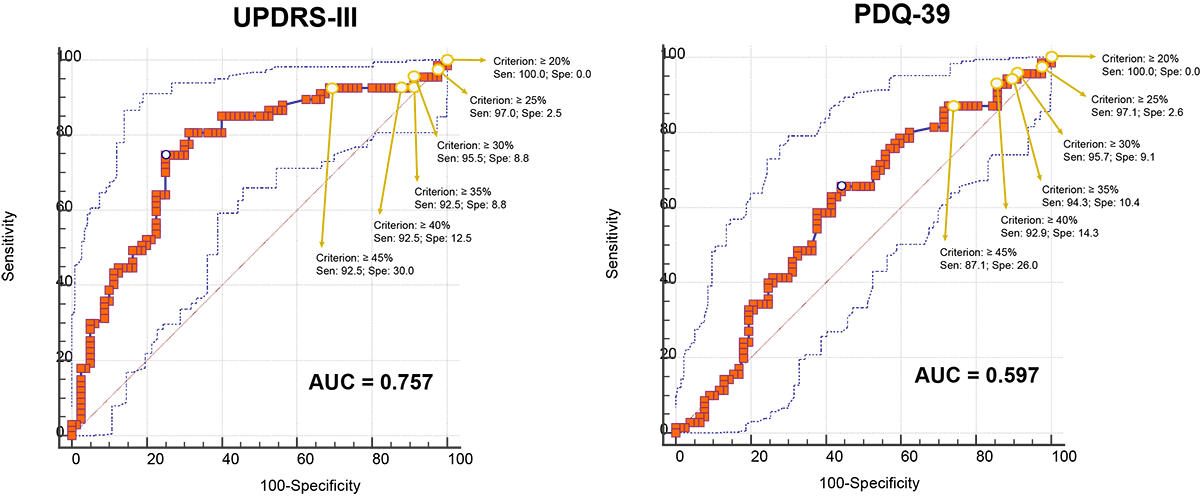Session Information
Date: Wednesday, September 25, 2019
Session Title: Phenomenology and Clinical Assessment of Movement Disorders
Session Time: 1:15pm-2:45pm
Location: Les Muses Terrace, Level 3
Objective: To better investigate the value of the challenge test by introducing total and partial LR, and explain the clinical significance of 30% LR through diagnostic analysis.
Background: Subthalamic nucleus-deep brain stimulation (STN-DBS) and L-dopa are two main therapies for Parkinson’s disease (PD). The acute L-dopa challenge test is regularly conducted to screen potential DBS beneficiaries and 30% L-dopa response (LR) is a well-recognized cut-off point. However, the mismatch between preoperative LR and real DBS efficacy can be commonly seen in the single-symptom-dominated (SSD) patients.
Method: Patients receiving UPDRS-III and PDQ-39 evaluation were classified into three groups: tremor-dominant group (TDG), akinetic-rigid-dominant group (ADG), and mixed group (MG). A cut-off value for determining STN-DBS benefit (good response or fair response) was calculated through meta-analysis. For patients in each group, total and partial LR acted as predictors in turn to diagnose percentage improvement of UPDRS-III and PDQ-39: TU represented the combination of total-LR~UPDRS-III, TP represented total-LR~PDQ-39, PU represented partial-LR~UPDRS-III and PP represented partial-LR~PDQ-39. Areas under curve (AUCs) were calculated and compared through DeLong test for various diagnostic combinations. The clinical significance of 30% LR was also analyzed by comparing sensitivity and specificity. We further conducted a sensitivity analysis.
Results: Overall, 147 patients were included in the study. The average follow-up is 5.6 months. Though meta-analysis , the average short-term improvement of UPDRS-III and PDQ-39 after STN-DBS is 49.8% and 30.7% respectively. Of all patients, the AUCs of TU and TP was 0.748 and 0.639 respectively. The sensitivity and the specificity of 30% LR was 96.0% and 9.6% for TU and 95.6% and 12.5% for TP. When comparing different diagnostic combinations, PP had significantly larger AUC than TP in the ART group (p = 0.017). In the sensitivity analysis, PP was close to significantly better than TP in the TDT group (p = 0.053). Other comparisons showed no significance.
Conclusion: As an indication of surgery ,30% is of good clinical value. TU is more appropriate when it comes to predicting improvements in motor scores .As for the improvemrnt of QOL, subscore of challenge test is recommended , especially for the ART patients.
To cite this abstract in AMA style:
GH. Lu, ZX. Yin, YW. Jin. Predicting the efficacy of STN-DBS in patients with different Parkinson’s disease motor subtypes by preoperative total and partial levodopa response [abstract]. Mov Disord. 2019; 34 (suppl 2). https://www.mdsabstracts.org/abstract/predicting-the-efficacy-of-stn-dbs-in-patients-with-different-parkinsons-disease-motor-subtypes-by-preoperative-total-and-partial-levodopa-response/. Accessed July 1, 2025.« Back to 2019 International Congress
MDS Abstracts - https://www.mdsabstracts.org/abstract/predicting-the-efficacy-of-stn-dbs-in-patients-with-different-parkinsons-disease-motor-subtypes-by-preoperative-total-and-partial-levodopa-response/



